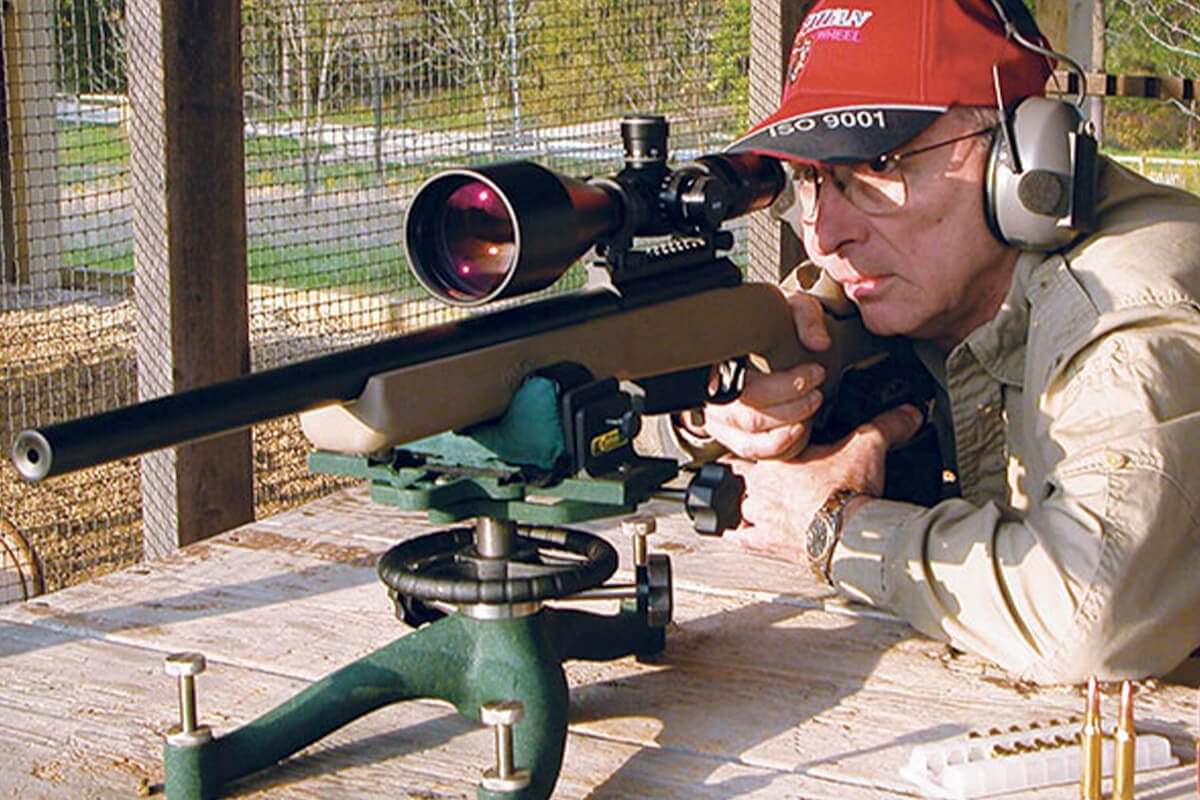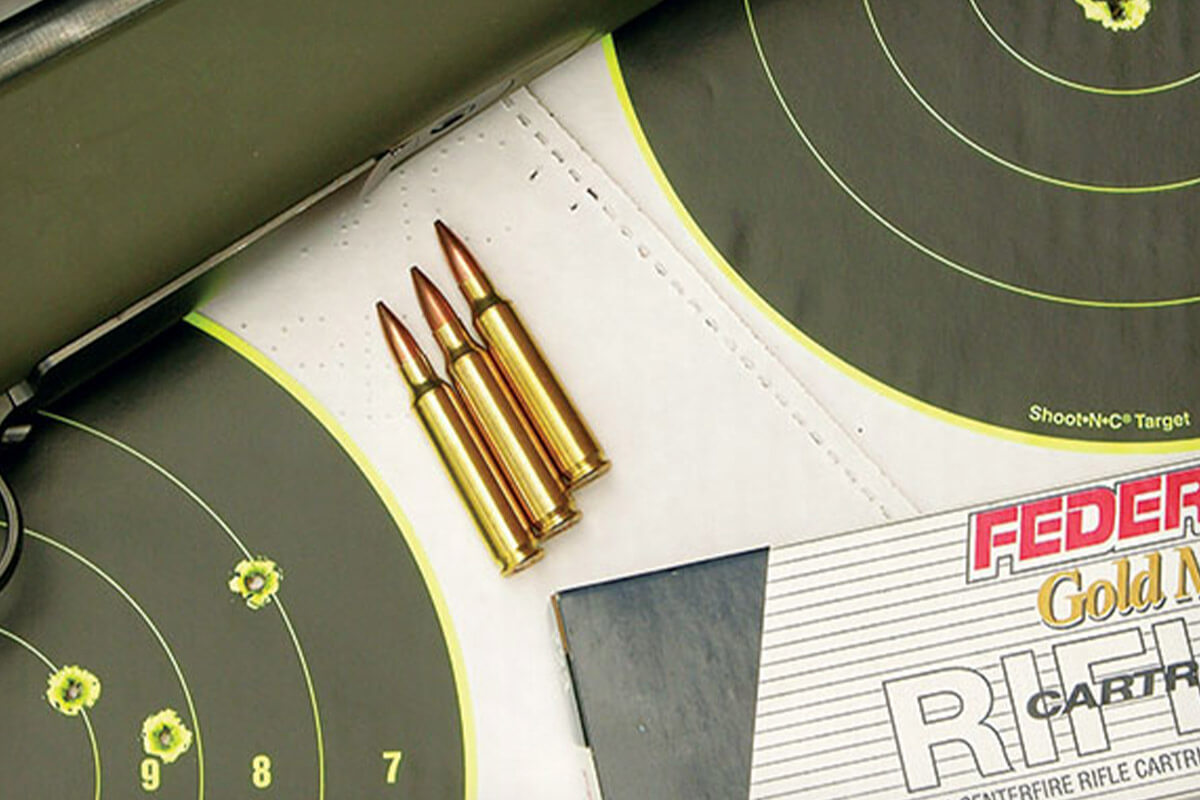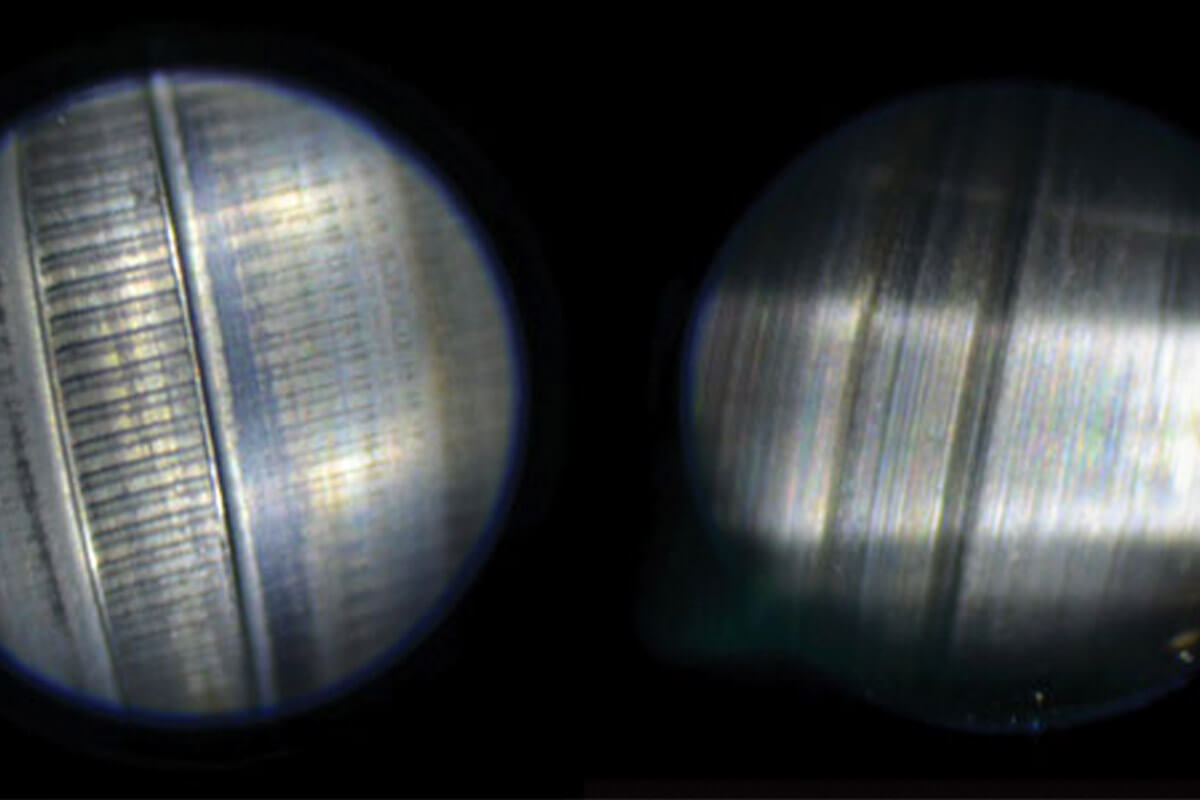
(RifleShooter Photo)
Among serious rifle marksmen there are few topics more enduring than the subject of break-in procedures for a new rifle barrel. Discussion generally falls into two separate areas. One is the question of what a proper new barrel break-in procedure should be: how many rounds, and what type of cleaning procedures and intervals to follow between rounds and between groups. The other, more fundamental question is whether a new barrel actually needs any specific or special break-in procedure at all. Informed and expert opinions on both questions run from procedures simple to complex, and from “absolutely essential” to “waste of time.” Let’s take a brief look at some of the issues involved.
First, nearly all rifle shooters are already generally familiar with the basic barrel break-in concept. Break-in guidelines are included in the owner’s manuals of many factory production rifles and most custom rifles, as well as on myriad internet websites and forums. While they differ in specifics, most involve a process that begins by firing a series of single shots from a fresh-from-the-box rifle, each shot followed by a thorough cleaning; then a series of three-shot groups, each group followed by a thorough cleaning; then a series of five-shot groups, each followed by a thorough cleaning.
The number of total rounds recommended runs from 50 on the low end to 200 on the upper end (depending on the particular guidelines), and some procedures also contain explicit directions concerning the types of cleaning compounds, chemicals and tools to be used.
Why Break In Barrels?
So what’s the purpose for all this? Put simply, the idea is to smooth out or get rid of any microscopic imperfections from manufacturing (tiny burrs, feathers, etc.) and “polish” the bore without adding any cumulative copper-fouling layer between bullet and bore in the process.
Even though the copper jacket material is softer than the barrel steel, it will wear away at such tiny irregularities (just as dripping water will wear away rock). Experienced rifle competitors will say that any barrel will reach the peak accuracy of which it’s capable after about 100 to 200 rounds. If you likened this to 1970s automobile makers recommending that a new car be driven for its first 1,000 miles at moderate rpm to achieve optimum mileage, you’d be about right.

But now things start getting more complicated. Not all rifle barrels are created equal, and not all rifle barrels will benefit from a break-in process to the same degree (or at all). Plus, the break-in process really only affects the rifled bore itself and can do little about any manufacturing irregularities in the chamber or the leade into the bore.
Moreover, if the repeated cleanings between individual shots and individual groups fired while breaking-in are not done with scrupulous care, you can wind up actually degrading the rifle’s accuracy more than if you’d never cleaned it or tried to break it in at all.
Many custom barrel makers report that they replace more barrels damaged by improper over-cleaning than are “shot out” by extended use or failure to correctly break in. And to add even another counter-intuitive element, it also turns out that a small amount of copper-fouling deposited in a bore can actually enhance accuracy rather than reduce it.
Here’s the deal. Most custom aftermarket barrel makers and custom rifle makers take much more care in manufacturing and finishing their bores than do production-rifle makers. Regardless of the particular mechanical rifling process used, the tools used for custom-grade barrels are held to higher tolerances (resulting in fewer tool marks), and custom barrels are typically hand-lapped and polished. The outcome is a barrel that is much more perfectly finished to begin with than a typical factory barrel. Such barrels will not and cannot be much improved on by an initial break-in process or by any enhanced cleaning or maintenance regimen.
The late Gale McMillan, long known as the dean of American barrel makers, often told the story of a customer for whom he had built a benchrest rifle that he had tested to be capable of nationals-winning groups before shipping. The customer loved the rifle when he received it, but after a month’s practice returned it saying it wouldn’t shoot any more.
Gale put it to the benchrest and found it was shooting groups three times larger than when he had tested it himself. Inspection with a borescope showed the bore was polished absolutely mirror-bright, but that the lands were all half-rounded off. Turned out that in pursuit of an absolutely perfect finish, the guy had been cleaning it of all copper fouling every five rounds by using abrasive lapping paste on the patches.
Standard factory rifle barrels do not receive the same amount of precision attention in final finishing as custom barrels. This does not mean that they are not capable of superb accuracy, but they are more likely to have the types of tiny irregularities a break-in process can smooth out or eliminate. At the same time, this also means factory bores, chambers and leades are more likely to have circumferential tool marks that the break-in process cannot alleviate (the only type of factory-production rifling that does not leave tool marks is hammer-forging).
An inherently rough, tool-marked bore will likely never shoot as well as you’d like, but a proper break-in will likely make it shoot better than it would otherwise. If you think of the break-in process as something that can help a factory-grade barrel be the best it can be, you’ve got the right idea. But it can’t make a bad barrel good.
Which brings us to the question of how a certain degree of copper fouling in a bore might actually enhance accuracy instead of degrade it—and to the question of whether removing every last bit of copper fouling from a bore is a good idea.
Slight tool markings in a bore show up as depressed areas in the lands and bottoms of the grooves, which are the first places to fill up with copper smeared from the passage of the bullet. In its initial phases, this process will actually even out the bore’s smoothness, and it is not until the amount of copper deposited begins to accumulate above the bore’s native dimensions that accuracy begins to deteriorate. Removing every bit of copper from such a bore will in fact take it back to a rougher, not smoother, state.

I’d read about this, but hadn’t experienced it until I over-cleaned one of my pet .243 Win. varmint rifles. It was a sub-MOA shooter, and I took pretty good care of it. No, I didn’t really ever clean it until the very last patch came out pristine white; there was always some blue copper stain remaining. But if its bore looked smooth and shiny using a bright bore light, and it kept on shooting a minute, I was happy.
Then I acquired a borescope and was going through all my guns, inspecting them. Horror of horrors! My .243’s bore was coated with a polished copper patina that my cleaning process had obviously not touched. So I went to work with the copper solvent and a lot of repeated passes until every last trace was removed.
Proud of myself, I went out to the range anxious to see how much its performance would be improved. With my pet ammo load I couldn’t get a single group under 1.25 inches at 100 yards. After a half-dozen three-shot groups, I put it on the rack and didn’t pick it up again for about a month. This time, after about three more groups, all of a sudden it “came back.”
Talking about it with some local competition riflemen, I was surprised to have them tell me: “Oh, yeah. My rifle always seems to shoot its best about 15 to 20 rounds after a thorough cleaning.”
That changed my entire attitude about the role of copper in a bore and gave me a whole new insight into the tried-and-true tradition of firing two or three “fouling rounds” through a fresh-cleaned rifle before taking it into the field or onto the competition line. It also proved once again that there are no “general rules” when it comes to rifles. Each is a law unto itself.
Barrel Break In Procedure: What To Do?
So with all this in mind, should you always go through one of the many recommended break-in processes with any brand-new rifle or barrel? Not necessarily. But you should always be ready to. Here’s what I do, which is a position somewhere in between the “break-in is essential” and the “don’t waste your time” crowds.

Whenever I obtain or review a new rifle, I come to it with a set of expectations. For a hunting-grade gun I want it to shoot minute-of-angle with at least one good commercial hunting load. If it’s a match-grade gun or a custom rifle I expect it to shoot sub-m.o.a. with a majority of the known accurate loads I put through it.
Knowing that all rifles are fired for function and basic accuracy before they leave the factory (and generally not thoroughly cleaned afterward), the first thing I do is give a new gun the same basic cleaning I’d do after a day at the range. No copper-fouling removal process, just making sure that any residual factory crud and firing residue is gone.
I’ll also use my borescope to inspect the bore and chamber and see just how well it appears to be machined and finished. (Yes, I know most shooters don’t have a borescope, because one costs about as much as a new rifle itself. But if you don’t, I strongly recommend you go in with two or three of your friends and buy one.)
After that initial cleaning and inspection, I benchrest one three-round group with a known accurate load in that chambering. If the group meets my expectations for that particular rifle, I simply go on and shoot it, without further break-in, following the same maintenance procedure I use all the time.
But if the group does not meet my expectations, I go directly into the break-in procedure that’s outlined in the sidebar, in the hope that by the end of the process there will be a visible improvement. Sometimes there is, sometimes there isn’t.
Either way, I learn what I need to know about the rifle in hand. I recently reviewed a new custom-barrel .308 rifle. I had high expectations for it, given its hefty price tag, and the first three rounds at 100 yards were touching. So I fired another two rounds, which touched the first three. Why would I need to do any further break-in?
On the other hand, about a month after that I reviewed a factory production .308 rifle that was positioned at the top of its manufacturer’s line, which I knew other reviewers had found to be a minute-of-angle gun. This time, the first three rounds of match ammo went about 1.38 inches, so I put it through the break-in process. Glad I did. After break-in the rifle’s groups with that ammo had shrunk to a half-inch average—a much greater improvement than normal. I suspect a burr in the bore.
The final, and most important point to take from all this is if you do decide to put a new rifle through a formal break-in process, be sure to remember the mission is to improve the smoothness of the bore – not scratch it up even more.
You must always work from the breech end of the barrel, not the muzzle. You must always use a bore guide to concentrically position the cleaning rod. And you must always use a non-marring rod; not one that will scratch or ding the chamber or bore. You don’t want to be one of those guys who needs a new barrel because you beat it up cleaning it instead of wearing it out shooting it.










